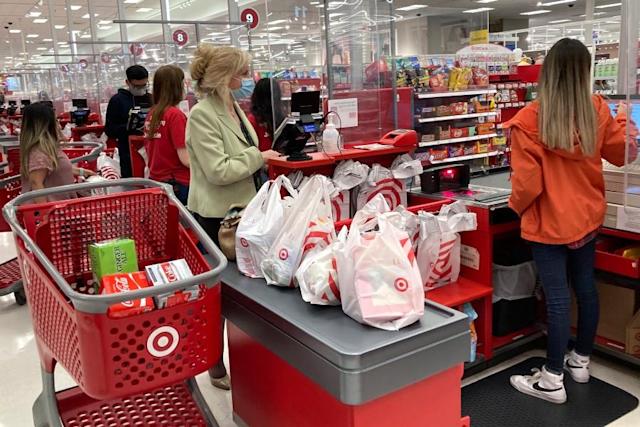
Consumer prices rose more than 6 percent annually in March, showing consumer spending taking a bigger bite out of household incomes, according to data released Friday.
The personal consumption expenditures (PCE) price index — the Federal Reserve’s preferred gauge of inflation — rose 6.6 percent over the 12 months ending in March, up from a 6.3 percent annual inflation rate in February, the Bureau of Economic Analysis (BEA) reported Friday. Annual inflation without food or energy prices, which are more volatile, fell slightly to 5.2 percent in March, down from 5.2 percent in February.
Prices rose 0.6 percent in March alone, largely in line with the monthly inflation rate since October, and by 0.5 percent without food or energy.
Rising consumer prices also cut into disposable incomes last month despite rapid wage growth over the past year. Disposable incomes rose 0.5 percent in March but fell 0.4 percent when adjusted for inflation.
But personal consumption expenditures, a measure of consumer spending, still rose 1.1 percent. While the gain was only 0.2 percent when adjusting for inflation, the resilience of consumer spending beat economists’ expectations of an overall decline.
The U.S. economy appears to be holding sturdy, even as high inflation, supply chain disruptions abroad, and the war in Ukraine push prices higher. While gross domestic product (GDP) fell for the first time since 2020 during the first three months of the year, economists blamed the drop on surging imports overwhelming strong consumer and business spending in the calculations of economic growth.
The U.S. also added 1.7 million jobs over the first three months of 2022 and is expected to see another strong month of employment gains when the April jobs report is released next Friday. Economists expect the U.S. to have added roughly 400,000 jobs last month, according to consensus estimates, in line with the March gain of 431,000 jobs.
Fed officials argue the strength of the economy will help the bank raise interest rates fast enough to curb inflation without throwing the U.S. into job loss or a recession. The bank is expected to raise its baseline interest rate range by 0.5 percent next week, twice the size of a typical rate hike, with inflation more than three times its preferred annual rate.
Even so, some economists fear inflation could continue to rise this year and force the Fed to take more aggressive action to fight price growth through higher rates.


